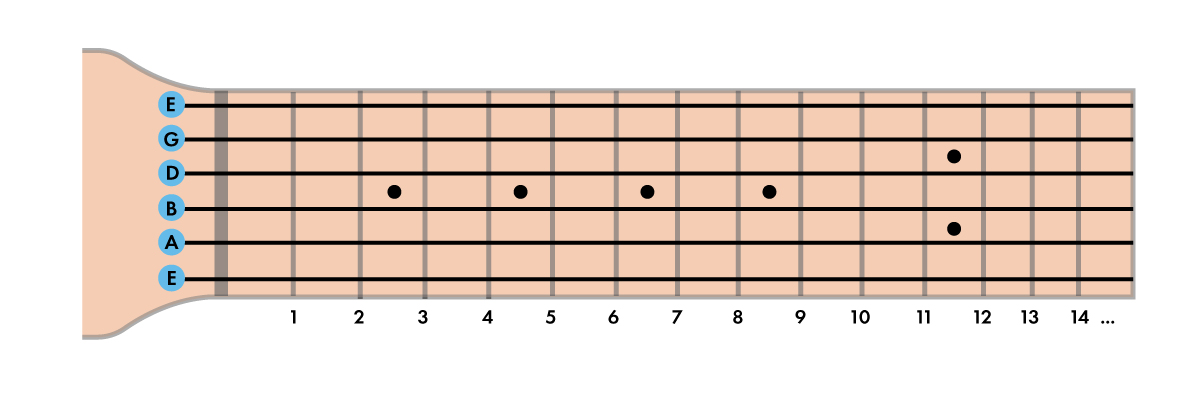.jpg)
There are a few different ways to tune your guitar. If you are looking for accuracy and to meet the actual pitch then you will need a tuner. But there are 2 other tricks to get your guitar to sound close to in tune if you don’t have access to a tuner.
#1 - Tuning using a clip on tuner
- Locate your tuner. This will often be inbuilt on the side of your guitar for acoustic guitars or a clip on, plug in or pedal tuner for electric guitars.
- Know what notes to tune to – This is important to make sure you don’t snap any strings in the process! Check the Diagram below to show you what strings to tune to.
- Select tuning mode – Chromatic or Guitar mode
- Using a pick, pluck the low E string (the thickest string), and wait for the tuner to indicate its pitch. If you pluck the string too hard this can affect the pitch, so when tuning pluck moderately, just enough for the note to play and be consistent. .
- Using the machine head, slowly adjust the pitch of the string so that the curser is in the middle of the tuners screen as pictured below.
- Repeat step 5 on all strings until they are at pitch.

The main cover photo indicates that E is at the correct pitch.
If the cursor is left of centre, then the note is flat (too low) and if the cursor is to the right it is sharp (too high).
For the E, A and D string – turn counter clockwise to tune upwards in pitch.
For the G. B and E string – turn clockwise to tune upwards in pitch.
NOTE: When tuning it is best to tune upwards to meet the correct pitch. So if your string is sharp it's recommended to tune back down below the target pitch (as in flat below E), and then tune back up.
#2 - How to tune by ear, using fretted notes
- Try and bring your low E string as close to pitch by ear as possible.
- Fret the 5th fret on the low E string and pluck. Then Pluck an open A string. These two notes should be the same pitch. Adjust your A strings pitch using the machine head to meet the pitch of the E string while fretted on fret 5.
- Repeat this for the A String (tuning the D string to match the pitch of the fretted 5th note), then the D string.
- When you get to the G String, you will need to Fret the 4th Note, to tune B to pitch
- Next, Tune the B string at the 5th fret.
- Lastly, check that your Low and High e Strings are the same pitch.
#3 – How to tune by ear, using Harmonics
NOTE: To create a harmonic on the guitar you lightly touch your finger to the string right above the fret. You don’t have to push the string down to the fretboard – If you do, the string won’t react as a harmonic.
When tuning up your guitar using harmonics, if your two strings are not at the same pitch you will hear oscillation or pulsating/wobbling effect while both notes are ringing together. Adjust your A string to meet the pitch of your E string and when the oscillation stops you have met the pitch of your E string.
- Lightly touch your finger to the 5th fret of the low E string, so that it is only just touching (don't press down!) and pluck. Lightly touch your finger over the 7th fret of the A string and pluck. These should be the same pitch. Adjust your A strings pitch using the machine head to meet the pitch of the E string using the harmonic as your guide. Continue this for The next strings, again except for the G-B String
- Lightly touch your finger to the 7th fret of the low E string, then pluck the b string. These should be the same pitch.
- Lastly, check your low E and high E pitch.
Thanks for reading this blog! to give you even more great content, check out our pages.
I hope this article has helped. if you need any assistance please email:
sales@artistguitars.com.au or call us on 1300 489 816
© Artist Guitars 2021